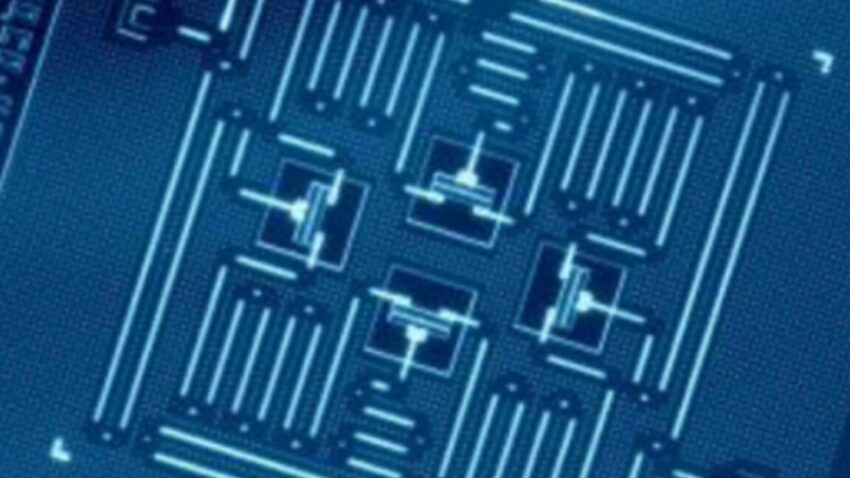
2025 nobel prize in physics awarded for The 2025 Nobel Prize in Physics has been awarded to John Clarke, Michel H. Devoret, and John M. Martinis for their groundbreaking work in macroscale quantum tunneling and energy quantization within electrical circuits.
2025 nobel prize in physics awarded for
A Landmark Achievement in Quantum Physics
The Nobel committee announced the award during a media briefing, highlighting the significance of the laureates’ contributions to the field of quantum technology. Their research opens new avenues for the development of advanced technologies, including quantum cryptography, quantum computers, and quantum sensors. The three physicists will share a prize of $1.1 million (11 million Swedish kronor), with the official presentation ceremony scheduled for December 10, 2025, in Stockholm.
The Laureates’ Reactions
John Clarke expressed his astonishment at receiving the award, stating, “To put it mildly, it was the surprise of my life.” During a press conference, he elaborated on the implications of their discovery, noting that it forms a foundational aspect of quantum computing. Clarke remarked, “Exactly at this moment where this fits in is not entirely clear to me. One of the underlying reasons that cellphones work is because of all this work.” His comments underscore the interconnectedness of modern technology and fundamental physics.
Understanding Quantum Tunneling
Quantum tunneling is a phenomenon that occurs at the subatomic level, where particles can pass through energy barriers that would be insurmountable according to classical physics. This behavior is a direct consequence of the principles of quantum mechanics, which govern the behavior of particles at microscopic scales. The concept challenges our traditional understanding of physics, where objects are expected to follow deterministic paths.
In classical physics, if a ball is rolled toward a hill, it will only reach the other side if it has enough energy to overcome the hill’s height. However, in the quantum realm, particles can “tunnel” through the hill, appearing on the other side without having the requisite energy to climb over. This counterintuitive behavior has profound implications for various fields, including chemistry, electronics, and even cosmology.
Macroscopic Implications
The work of Clarke, Devoret, and Martinis extends the understanding of quantum tunneling beyond the microscopic scale. Their research demonstrates that this phenomenon can occur in macroscopic systems, such as electrical circuits. This breakthrough is particularly significant because it bridges the gap between quantum mechanics and classical physics, showing that quantum effects can manifest in larger, everyday systems.
One of the key aspects of their research involves energy quantization in electrical circuits. In simple terms, this means that energy levels in these circuits are not continuous but rather quantized, similar to how electrons exist in discrete energy states within an atom. This quantization is crucial for the development of quantum technologies, as it allows for the manipulation of quantum states in a controlled manner.
Applications in Quantum Technology
The implications of this research are vast and varied, particularly in the realm of quantum technology. The Nobel committee emphasized that the discoveries made by Clarke, Devoret, and Martinis could lead to advancements in several key areas:
- Quantum Cryptography: The principles of quantum mechanics can be utilized to create secure communication channels that are theoretically immune to eavesdropping. This technology relies on the fundamental nature of quantum states, which cannot be copied or measured without disturbing them.
- Quantum Computers: The ability to manipulate quantum states in macroscopic systems opens the door to more powerful quantum computers. These devices could solve complex problems much faster than classical computers, revolutionizing fields such as cryptography, optimization, and material science.
- Quantum Sensors: Enhanced sensitivity in measurements can be achieved through quantum effects, leading to advancements in various fields, including medical imaging, navigation, and environmental monitoring.
Quantum Computing: A Closer Look
Quantum computing stands out as one of the most promising applications of the discoveries made by the Nobel laureates. Traditional computers process information in binary form, using bits that can be either 0 or 1. In contrast, quantum computers utilize quantum bits, or qubits, which can exist in multiple states simultaneously due to the principle of superposition. This allows quantum computers to perform complex calculations at unprecedented speeds.
The work of Clarke, Devoret, and Martinis is particularly relevant to the development of qubits that are stable and can be manipulated effectively. Their research demonstrates how macroscopic quantum tunneling can be harnessed to create qubits that maintain coherence over longer periods, a crucial factor for practical quantum computing.
The Historical Context of Quantum Mechanics
To fully appreciate the significance of this award, it is essential to understand the historical context of quantum mechanics. The early 20th century marked the beginning of a new era in physics, as scientists began to explore the behavior of subatomic particles. Pioneers such as Max Planck, Albert Einstein, and Niels Bohr laid the groundwork for what would become quantum theory.
As physicists delved deeper into the quantum realm, they discovered that classical laws of physics, which had governed the understanding of the macroscopic world, no longer applied. Instead, they encountered a landscape dominated by probabilities and uncertainties. This shift in perspective not only transformed the field of physics but also paved the way for technological advancements that have shaped modern society.
The Role of Quantum Tunneling in Technology
Quantum tunneling has already found practical applications in various technologies. For instance, it plays a crucial role in the operation of tunnel diodes and Josephson junctions, both of which are essential components in modern electronics. These devices exploit the tunneling effect to achieve high-speed switching and sensitive measurements.
Moreover, quantum tunneling is also a fundamental process in nuclear fusion, which powers the sun and other stars. Understanding this phenomenon is vital for efforts to harness fusion as a clean and virtually limitless energy source on Earth.
Future Directions and Implications
The recognition of Clarke, Devoret, and Martinis by the Nobel committee highlights the importance of continued research in quantum mechanics and its applications. As the field evolves, it is likely that new discoveries will emerge, further bridging the gap between quantum and classical physics. The potential for technological advancements is immense, and the implications for society could be profound.
Stakeholders in various sectors, including technology, finance, and healthcare, are already paying close attention to developments in quantum technology. Companies are investing heavily in research and development, seeking to harness the power of quantum computing and related technologies to gain a competitive edge. Governments are also recognizing the strategic importance of quantum research, leading to increased funding and support for academic and industrial initiatives.
Challenges Ahead
Despite the excitement surrounding quantum technology, significant challenges remain. One of the primary hurdles is the issue of decoherence, where quantum states lose their coherence due to interactions with their environment. Researchers are actively exploring methods to mitigate this effect, but achieving stable and scalable quantum systems is still a work in progress.
Moreover, as quantum technologies advance, ethical considerations will also come to the forefront. The potential for quantum cryptography to create unbreakable communication channels raises questions about privacy and security. Policymakers will need to navigate these complex issues as they develop regulations and frameworks to govern the use of quantum technologies.
Conclusion
The awarding of the 2025 Nobel Prize in Physics to John Clarke, Michel H. Devoret, and John M. Martinis marks a significant milestone in the field of quantum mechanics. Their research on macroscale quantum tunneling and energy quantization in electrical circuits has far-reaching implications for the future of technology. As the world moves closer to realizing the full potential of quantum technologies, the contributions of these laureates will undoubtedly play a pivotal role in shaping the next generation of innovations.
Source: Original report
Was this helpful?
Last Modified: October 8, 2025 at 2:36 am
1 views















